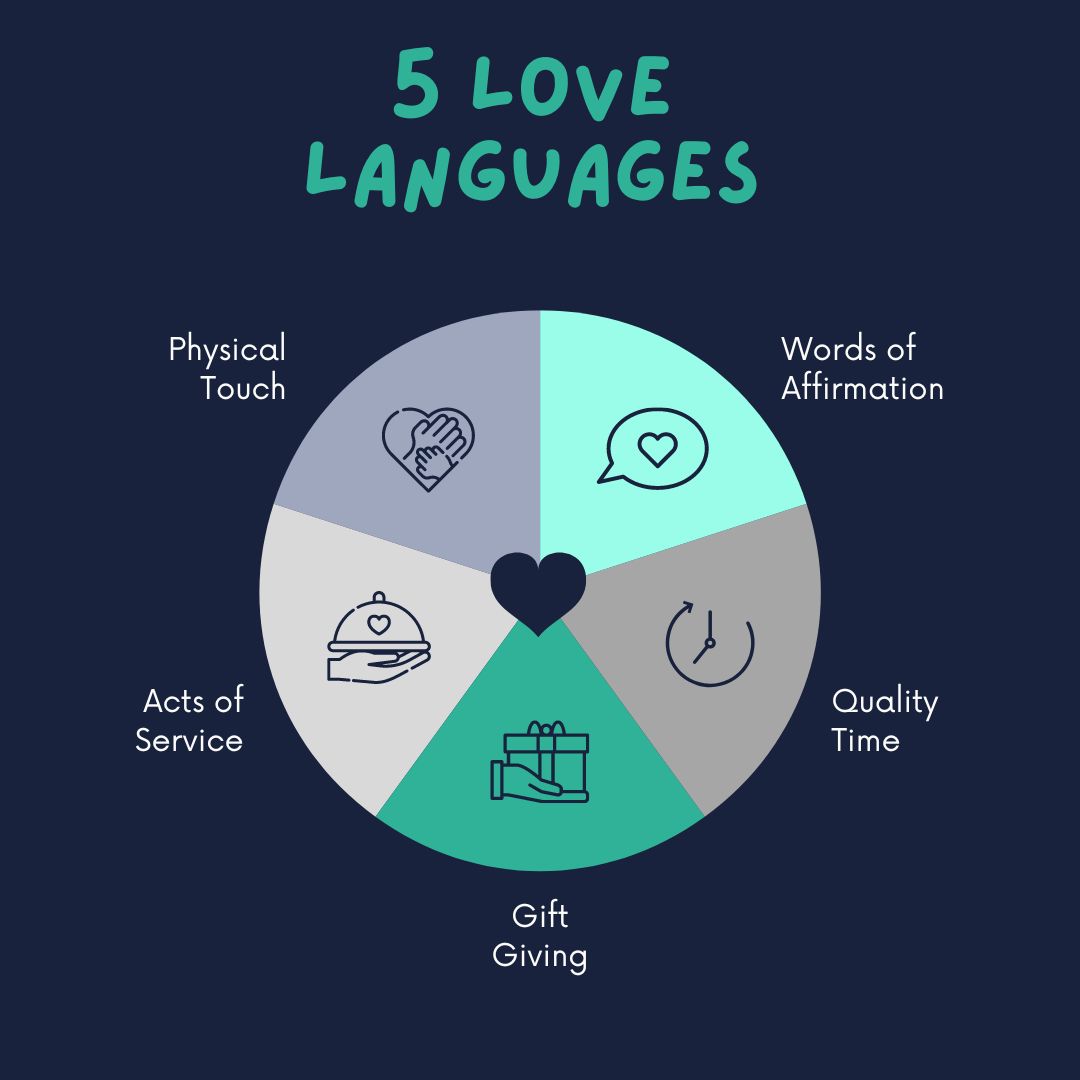What does love look like?
There isn’t only one way to define what love looks like. Life would be much simpler if there was. We each have our own way of showing those around us that we love them. We also have our own way we expect those around us to show their love to us in return. The problem is that not everyone’s ways are the same, and incorrect assumptions can result from this.
Many times in therapy sessions I’ve heard examples like – “They don’t put any effort into my gifts, they clearly don’t love me”, “If they never say they love me, maybe it’s because they don’t”, “They are just trying to buy me, they don’t really care”, “They don’t make much time for me, I don’t think they want me in their life anymore”, “They never hug me, never show me any affection, it’s hard to believe they could love me”, “It never occurs to them to help me, that’s not love”, “If they loved me, they would want to spend more time with me”. These are just some examples of how different ideas of what love looks like can end up with conflict and distance in relationships.
Thankfully in 1992 American Author and Therapist Gary Chapman introduced a new concept to help with this – The 5 Love Languages. Love Languages are defined in two parts – the way we show our love to others, and also the way we prefer/expect others to show their love to us.
What are the 5 Love Languages?
1. Acts of Service
This covers the things that someone does to make another person’s life easier, to help them out, to take some of their burden. This could include doing chores they know they don’t like to do like emptying the bins, taking over duties when it’s recognised someone is struggling like cooking or childcare, as well as many other examples.
2. Giving/receiving of Gifts and tokens
This love language will usually be made up with thoughtful gifts, cards and token gestures. Not just for occasions like birthdays and Christmas, but as thankyous, as comfort, as congratulations and just because. It can include tokens as well such as filling up someone’s car with petrol, or paying for an outing etc. None monetary gifts can also be included in this category.
3. Quality time
This is all about making time for another person. Time together that is considered to be quality, therefore without devices or distraction. For this love language you’d expect to see the person consider this above other demands on their time, and to prioritise it.
4. Words of Affirmation
This love language requires good verbal communication, both in person and in writing. It includes words such as I love you, I appreciate you, I’m grateful for you, Thank you, I miss you, You mean a lot to me, I’m glad I shared this experience with you, and so on.
5. Physical Touch/Affection
This love language includes Sex, but also covers holding hands, hugs, comforting touch, physical proximity and much more.
Understanding Love Languages and relationships
As you’ve read through these 5 love languages, have you noticed which of these are your preferred ways for partners to show they love you? How about your preferred way to show a partner that you love them?
If you are in a relationship, can you recognise what your partner’s love languages might be for their default way to show their love for you, and how they like you to show your love to them?
The love languages concept was created for romantic relationships, but there is a benefit in understanding these for all types of relationships. I have applied this concept in therapy for adults to better understand their relationships with their parents, and also to understand the development of friendships.
Understanding love languages can help your relationships in 3 ways:
1. You learn to recognise signs of love from others that use your none preferred love languages
2. You can articulate to others what your preferred love languages are so they are better able to understand and meet your needs
3. You can understand what another person’s love languages are so you can better meet their needs
Relationships where 2 people’s love languages match up are typically easier to navigate. Relationships where love languages differ will generally need better communication and more effort to understand each other to avoid conflict/misunderstandings.
By being able to recognise how those around us show us their love, it helps us to feel more connected, more appreciative, and more loved.
A word of warning
It is possible to misunderstand love languages and see love where there isn’t, and not see love where there is. The actions associated with love languages can be the same actions used within toxic and manipulative relationships. The difference is the intention behind the action, the emotion behind the action, is it used for control or is it heartfelt. If we misinterpret this, we can end up keeping someone in our lives that we wrongly believe loves us, or we can end up pushing someone away that does love us but whose behaviours remind us of someone who didn’t.
Another caveat to love languages is separating this out from people-pleasing. I’ve written several previous blogs about people-pleasing. The reason we people-please isn’t just about showing love, it’s about fear of rejection, not feeling good enough, and feeling guilty or selfish. A people pleaser can often be excessive in their love language actions, going over the top in gift giving, making excess time for others, using an abundance of words of affirmation, constant physical touch and excessive offers of acts of service, often to the point of sacrificing themselves and feeling burnt out. Some of this can also apply for Low-Self-Esteem.
If you want to learn about Love Languages, head to Discover Your Love Language – The 5 Love Languages®




